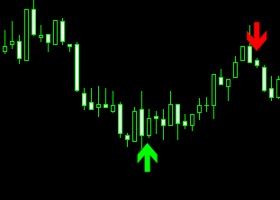Treasuries yields backed up steadily through overnight trading and the first part of the New York session into the 10- year auction and then extended the losses after weak auction results before recovering a bit later in the day to end with a sizable bear steepening sell the likes of which hadn’t been seen since December. The eventual 8 bp rise in the 30-year Treasury yield to 2.23% tracked a 4 bp backup in the 30-year JGB yield to 0.13%, 11 bp rise in the 30-year Bund yield to 0.48%, 7 bp rise in the 30-year Gilt yield to 1.67%, etc., across the range of DM markets where long end yields jointly plunged to record lows last week. While following global yields and risk market gains, the main item on the U.S. calendar was the 10-year auction, which didn’t help matters. The $20 billion reopening was awarded at 1.516%, tailing 1.5 bp on top of substantial losses already into the bidding deadline. The bid/cover fell to a six-year low of 2.33, and investor demand was light, with the combined indirect (54.3%) and direct (7.9%) bidder share of 62.3% the low January of last year and well below a 75% average in the past year. Other than supply pressures (a weak 30-year JGB auction overnight was also a problem in addition to Treasury supply) there wasn’t really much new happening Tuesday to point to in explaining the broad global yield reversal. But the continued gains in global risk markets, which in the U.S. moved well through pre-Brexit levels to new highs, seemed to contribute to casting the mixed employment report results in a more favorable light while raising optimism about the efficacy of expected post Brexit global easing moves that are expected to start this week with a Bank of England rate cut and substantial Japanese fiscal package. The latter appears to have been the largest specific new driver of global risk on sentiment this week looking at the 6.3% rally in the TOPIX the past two days and sharp depreciation in the yen to 104.9 from 100.5.
At 3:00, benchmark nominal Treasury yields were up 2.5 to 8 bp, and the curve steeper, a reversal from the intensified bull flattening trend that had been underway post-Brexit through the end of last week. The 2-year yield rose 2.5 bp to 0.68%, 3-year 4 bp to 0.81%, 5-year 6 bp to 1.08%, 7-year 8 bp to 1.34%, 10-year 8 bp to 1.51%, and 30-year 8 bp to 2.23%. After some early dip buying, our desk saw better selling through most of the day, including a notable post-auction reversal to domestic and foreign real money selling at the long end, where the buying appetite into ever lower yields had seemed insatiable last week. LDI receiving in the long end of the swaps market did continue, however, but our desk saw better real money paying in the front end, as domestic real money investors looked for not as flat a Fed rate outlook in the next few years, including interest in reds/greens and reds/blues eurodollar steepeners. In spreads, with earnings season underway and banks reporting starting next week, anticipation of the typical downward pressure on swaps from post-earnings swapped financials issuance started to put downward pressure on swap spreads from 5-years and out. In the short end, though, the eurodollar futures selling along with a steady march higher in 3-month LIBOR recently – to 0.67335% Tuesday from 0.6691% Monday and a recent low of 0.6236% on June 24 – versus post-Brexit higher but recently more stable Treasury repo/fed funds rates put upward pressure on swap spreads. So the benchmark 2-year spread rose 0.3 bp to 16.9 bp v. 1 bp drops in the 10-year and 30-year spreads to -12.1 bp and -43 bp. While almost all of Monday’s selloff in nominals came in real rates, the further risk on move and upside this time in energy prices also helped TIPS outperform Tuesday. The 5- year TIPS yield rose 1.5 bp to -0.39%, 10-year 5 bp to 0.03%, and 30-year 6 bp to 0.62%, so respective inflation breakevens rose 4, 3, and 2.5 bp, to 1.49% for the 10-year.



